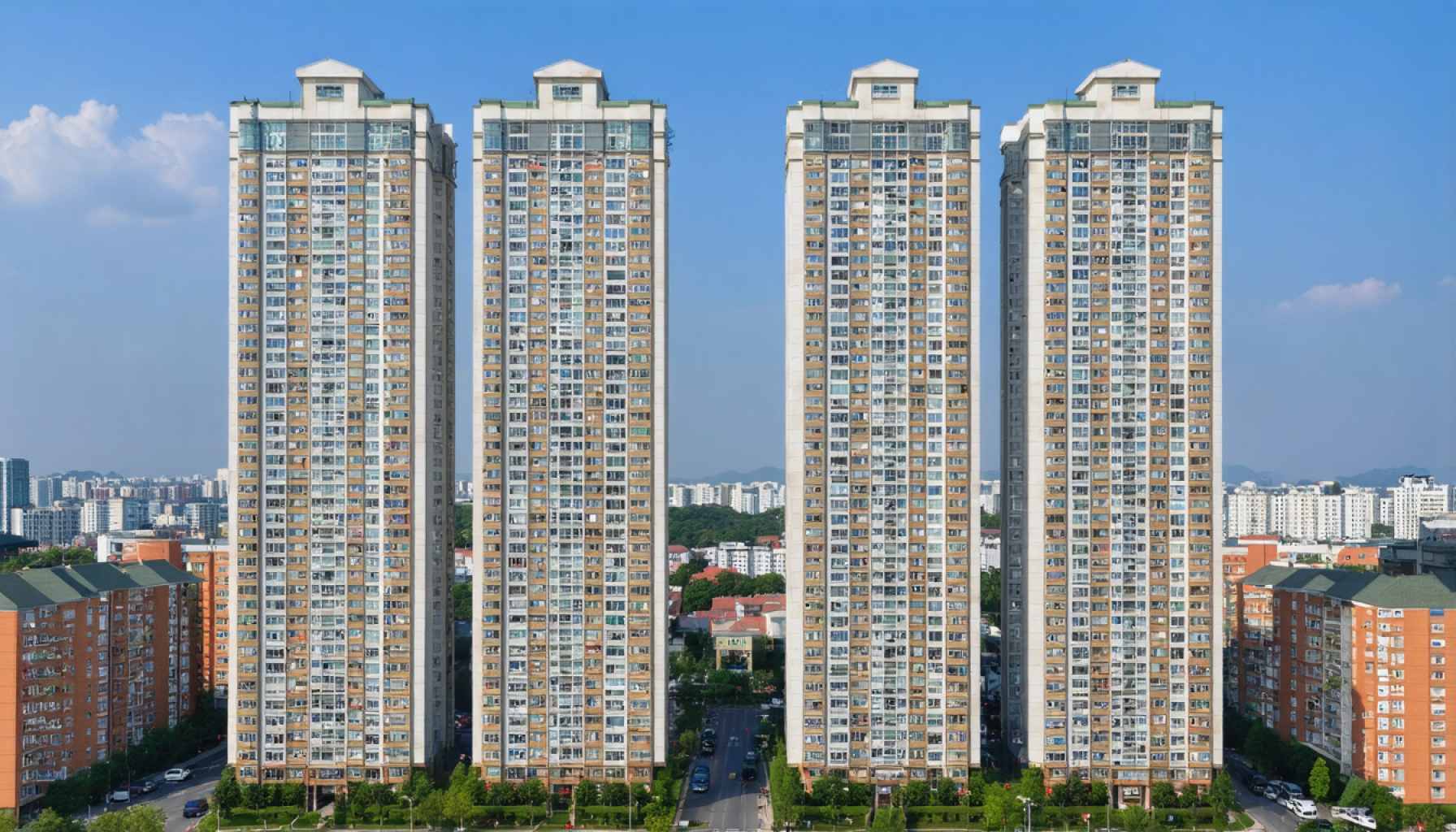- South Korean investors are increasingly focusing on multifamily housing developments in major U.S. cities, such as Miami.
- These multifamily projects offer luxury and modern amenities and are seen as stable investments amidst economic uncertainty.
- The flexible rental models of multifamily housing can better adapt to inflation and changing interest rates than traditional real estate investments.
- Key Korean investors include the Public Officials Benefit Association and the Korea Investment Corporation, who target urban properties from Silicon Valley to Boston.
- With rising home prices, millennials prefer renting, boosting demand for multifamily developments with amenities like fitness centers and coworking spaces.
- Multifamily investments accounted for over one-third of U.S. real estate transactions last year, indicating a strategic shift in investment focus.
- The trend suggests significant growth potential in multifamily housing, aligning with demographic changes and new lifestyle preferences.
In the glitzy landscape of global real estate, a subtle shift captivates savvy investors in South Korea. Focusing their gaze on the sprawling urban centers of the United States, these investors are discovering untapped potential in multifamily housing developments.
Imagine towering residential complexes rising amidst the Miami skyline, appealing with the promise of luxury and modern convenience. These multifamily housing projects, synonymous with upscale living and urban vibrancy, stand as stalwarts against economic uncertainty. As commercial real estate quivers, these assets provide a shield against volatility, their strength resting in flexible rental models that adapt swiftly to inflation and fluctuating interest rates.
Korean giants such as the Public Officials Benefit Association and the Korea Investment Corporation have invested millions, seizing opportunities from Silicon Valley to Boston. Their strategy is clear: harness strong, stable income streams from prime urban properties as traditional real estate investments, like office spaces, face unsettling declines.
The allure doesn’t stop there. With soaring home prices nudging millennials toward renting, developments that offer more than just a place to live—think fitness centers and collaborative workspaces—are in vogue. These modern sanctuaries cater to a new lifestyle, promising convenience at every corner.
The numbers speak volumes. Multifamily investments constituted more than one-third of U.S. real estate transactions last year, with a record surge as investors shift strategies. As demographic trends reshape urban living, experts envision even greater influxes toward these ventures, prophesying a transformational growth journey.
As these South Korean firms anchor their stakes across American skylines, the multifamily sector emerges as a beacon for prospering investments, intertwined with cultural tides and economic dreams. In this modern real estate gold rush, multifamily housing isn’t just about providing homes—it’s about securing futures.
The New Gold Rush: Why South Korean Investors Are Eyeing U.S. Multifamily Housing
Real-World Use Cases and Market Trends
In recent years, multifamily housing has become a buzzword among real estate investors, especially from South Korea. This sector’s appeal is manifold: urbanization, lifestyle shifts, and economic stability make it a superior investment vehicle. South Korean investors are particularly drawn to cities like Miami, New York, and Los Angeles, seeking high-performing assets that ensure stable rent income and appreciate property values.
How-To Steps: Investing in U.S. Multifamily Real Estate
1. Research Market Trends: Begin with understanding the key urban markets in the U.S. that offer rental growth potential. Focus on growth indicators like job market health, migration patterns, and housing demand.
2. Partner with Local Experts: Collaborate with U.S.-based real estate firms for local insights. Understanding zoning laws, tenant regulations, and tax implications is crucial.
3. Analyze Financial Data: Evaluate the financial stability of properties with metrics such as Cap Rate, Net Operating Income, and Cash-on-Cash Return.
4. Leverage Technology Tools: Use data analytics tools to forecast demand and invest in PropTech for real-time market data.
5. Secure Financing: Explore financing options through U.S. banks familiar with foreign investment or consider forming joint ventures with local partners.
Pros & Cons Overview
Pros:
– Stable Cash Flow: Multifamily properties offer consistent rental income.
– Diversification: Spreads risk across multiple units rather than a single property.
– Tax Benefits: Opportunities for deductions on mortgage interest, depreciation, etc.
Cons:
– Management Complexity: Requires a robust property management plan.
– Market Sensitivity: Subject to shifts in urban demographics and economic cycles.
– High Initial Costs: Entry barriers can be significant due to property prices.
Security & Sustainability Concerns
Security in multifamily investments relates directly to location. Safe neighborhoods demand higher rents and ensure lower turnover. Sustainable buildings also gain higher attractiveness as tenants look for eco-friendly living options. Incorporating solar panels, energy-efficient systems, and sustainable waste management can provide a competitive edge.
Reviews & Comparisons
Comparing multifamily investments to other real estate options, such as office spaces, multifamily properties showed resilience during economic downturns like the pandemic due to steady demand for residential spaces. In contrast, commercial property investments struggled with issues like remote work trends leading to vacancy rises.
Controversies & Limitations
Regulatory challenges and cultural differences can present barriers. South Korean investors must navigate foreign investment laws, which vary from state to state. They also need to adapt to cultural nuances of the U.S. housing market, which may differ significantly from those in Korea.
Actionable Recommendations
– Diversify Your Portfolio: Consider multiple locations to mitigate market risk.
– Stay Updated on Policy Changes: Regularly review U.S. tax codes and real estate regulations to optimize investment strategies.
– Prioritize Tenant Experience: As demand for amenities rises, focus on developments that cater to lifestyle needs.
For further information on real estate investment strategies and insights, visit Investopedia or Forbes.
With these insights, South Korean investors are well-positioned to capitalize on the thriving multifamily sector, balancing risk with forward-thinking strategies.
